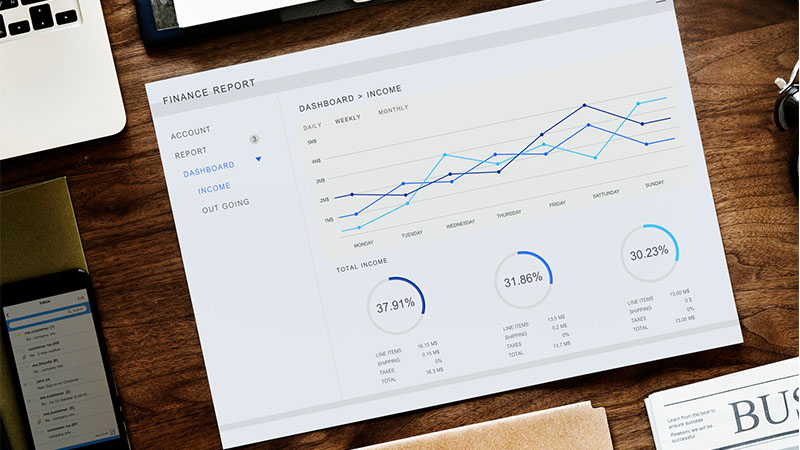
Accounting data is full of ‘stories’ and telling these stories can help you improve your business. An example that we see all too often looks something like this:
A Business with Top Line Growth Goals…
Nothing unusual there. Many businesses want to grow revenue to reward their shareholders or just stay competitive. The amount of growth and the timeframes may vary depending on the age and size of the business.
A Sales Strategy…
To achieve that growth the focus is on:
- better marketing (to generate more leads) and/or
- better sales (to attract new customers) and/or
- better customer service (to retain customers)
Making sense so far? Anything wrong with this picture? Not necessarily ‘wrong’… but what about SOME focus on selling to EXISTING customers. Data often reveals that this is an under-exploited source of new revenue. So, let’s ask some questions before spending money.
Question 1: What’s the cost of acquiring a NEW customer versus selling to an EXISTING customer?
Think about any one of your newly-acquired customers. Were they exposed to your marketing efforts? Did they buy from your sales team? What did it cost to close this deal? That is, how much were you ‘out of pocket’ before you started to derive income from this NEW customer?
Now let’s think about your EXISTING customers. What would it take to attract some ADDITIONAL income from these businesses – who know you and have already bought from you?
Example:
“Business A” is a large provider of engineering services to manufacturers with 150 current customers. For years, they have been advertising extensively, holding marketing events and publishing white papers, all at considerable cost. They calculated that acquiring a NEW customer cost 2.5 times more than attracting the same amount of (new) revenue from EXISTING customers – who already trust the business, its brand and its products.
Question 2: What’s the lead time to close business with NEW customers versus with EXISTING customers?
This is related to Question 1 but a longer lead time will usually consume more resources costing more money and increasing ‘opportunity cost’. (Couldn’t those resources be deployed more effectively elsewhere)?
Example:
“Business B” is a seller of software to small and medium-size businesses. They found that the lead time to ‘close’ a NEW customer was 3 months but, when ‘upselling’ to EXISTING customers, the average was 7.5 weeks. By having more of the sales team focus on EXISTING customers, they were able to grow revenue (and their ‘selling efficiency’ improved).
Question 3: What are your sales ‘conversion rates’ for NEW versus EXISTING customers?
Another related question… which speaks to the probability that you will be successful when selling. The sales and accounting data of most businesses will usually show they are less successful closing business with NEW customers compared to EXISTING customers.
Example:
“Business C” sells automotive parts to operators of large vehicle fleets. They diligently measure the number of ‘inbound’ and ‘outbound’ leads generated each month. Some of these are turned into ‘opportunities’ after an initial review. The data shows that, over the past 18 months, 11% of these ‘opportunities’ were turned into customers. They also started to approach their EXISTING customers to seek new business opportunities and found they were able to ‘convert’ 34% of these opportunities – a 3-times better result than with NEW customers!
In the above examples, there is strong evidence (data) to suggest that focusing on sales to EXISTING customers can drive impressive growth.
So, what does this all mean? Should you abandon all your sales efforts, forget about customer service and just focus on selling to customers? Absolutely not! But you should have a handle on the data referred to above. It will probably reveal that there is at least SOME opportunity to grow revenue through your EXISTING customers. In that case, here are some tips.
Tips:
- Review your current product and service offering. Are you selling what you should be selling? Are your products ‘bundled’ and priced correctly? Important to be clear on this as you look for additional opportunities;
- Classify your customers based on what additional products / services they may need from you. Some won’t need anything else. Some may need something… but not for a while. And some could be looking to buy immediately – that’s where you want to focus. Take the time to understand your customers’ businesses and their needs. Focus on their Lifetime Value (LTV) to your business;
- Tidy up your communications. Make sure your website, presentations, social media and sales team all communicate the same message on what you can sell and deliver;
- Make interesting offers to your customers. Don’t just try to sell them more. Make it compelling for them;
- Expect to reach out repeatedly to customers. This is not a one-time deal. Track how they respond to your communication and tailor your future approach;
- Make a plan and follow it. Decide who will reach out to customers. When? How? Track your progress and do more of what is working well; and
- Get started. There’s no great time… but it’s always a good time to talk to customers. So, get on with it!
Finally, accessing and analysing this kind of business data used to be considered a luxury, but now it’s a necessity.
Talk with our team of small business experts to help get you on your way.




